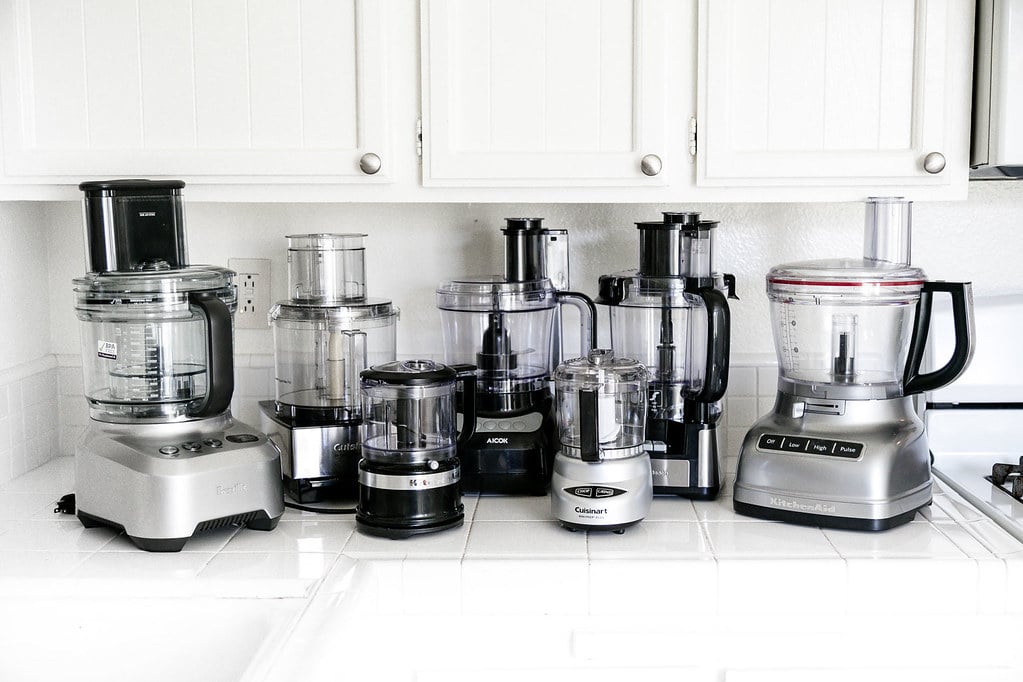Grinding whole-bean coffee right before brewing ensures freshness, decreases exposure to flavor-destroying oxygen, and helps preserve coffee’s natural flavors. But what if you don’t have a grinder? How do you grind fresh beans for that all-important cup to start your day?
Table Of Contents
−- Grinding Coffee Beans in a Food Processor: The Basics
- Food Processor or Coffee Grinder: Which Should You Choose?
- The Difference Between Coffee Grinders and Food Processors
- What Type of Coffee is Good When Grinding from a Food Processor?
- What Ground Should You Expect?
- How to Grind Coffee in a Food Processor
- Time to Remove the Coffee Ground
- Best Brewing Method with a Food Processor-Grind
- Conclusion
In this article, we explore whether you can grind coffee beans in a food processor and how it compares to using a coffee grinder.

Grinding Coffee Beans in a Food Processor: The Basics
Yes, you can grind coffee in a food processor or a blender. A blender is a quick substitute for a coffee grinder, as its blade cuts the coffee beans similarly to a blade grinder. However, it won’t be as reliable as a burr grinder. By using the medium-fine grind setting on your food processor, you can achieve an almost espresso-worthy grind consistency for your coffee beans.
Food Processor or Coffee Grinder: Which Should You Choose?
If you don’t have a burr grinder, a food processor, blender, or even a hammer can suffice! To mimic the consistency and texture that a top-quality burr grinder offers, and if you have time, use a mortar and pestle. But if you’re short on time or energy, consider purchasing a grinder.
Grinding coffee in a food processor can be a space-saving alternative if you don’t have a large workspace and want to save on kitchen equipment. Just remember to start with a few beans for better consistency and uniformity in the coffee grounds.
The Difference Between Coffee Grinders and Food Processors
The most significant difference between coffee grinders and blenders or food processors is the metal mechanism inside. Coffee grinders have burrs, which are physically abrasive enough to cut and break coffee beans. In contrast, food processors have sharp blades.
Both can yield excellent results when grinding coffee beans, but the main advantage of coffee grinders is uniformity. As coffee mills are specifically designed for grinding coffee beans, they produce consistently-sized coffee bits, resulting in the perfect coffee extract from your beans.
What Type of Coffee is Good When Grinding from a Food Processor?
You don’t need an electric or manual burr grinder for a “nearly fine” brew. Instead, pulverize coffee beans in a food processor. If you prefer drip or French press coffee, a blade-style coffee grinder or food processor will do the job, as consistent or ultra-fine grinding isn’t necessary. For simple espresso-like appliances with flow restrictors, a food processor can also work.
What Ground Should You Expect?
Using a food processor’s motor-driven, spinning blade, you can create two types of coffee grounds:
- Medium-fine grind: A medium-fine grind is quickly achievable using a processor. Grinding coffee in a food processor for a few minutes will result in an almost perfect grind for most pour-over brew methods.
- Coarse grind: To achieve a coarse grind, “pulse” the processor in quick bursts, shaking it between grinds and avoiding extended medium-fine grinding. This method is a bit trickier, and you may not achieve the same quality as a burr grinder.
Grinding consistency helps you extract the best flavors uniformly from your favorite coffee beans. Experiment with a few beans and monitor the texture as you add more coffee beans to the unit, testing the grind shape.
How to Grind Coffee in a Food Processor
To use a food processor to grind coffee, follow these steps:
- Measure 2 tablespoons of beans per 6-8 ounce cup of coffee into the processor’s work bowl. Grind the beans just before brewing for maximum freshness.
- Press the “Low” or “High” speed button five times for 2 seconds each time. Start at a low speed to gauge the coffee grounds’ texture.
- Gently rock the processor so that the particles at the top of the bowl fall near the blades, or tap the appliance’s feet on your work surface.
- Press the “High” button for about 30 to 45 seconds, closely monitoring the texture of the beans and any whole beans that were pushed to the side of the processor.
- If the grounds are about 1/8 inch across, with some finer particles, but not quite powdery, you’re ready to proceed.
Time to Remove the Coffee Ground
- Tap the processor cover to dislodge any stuck grounds, lift off the cover, and set it aside.
- Twist and lift the work bowl off the motor base.
- Shake the majority of the ground beans into your French press carafe.
- Use a pastry brush or a paintbrush to sweep out any remaining coffee grounds from the processor.
- Finally, wash the food processor and remove all oily residue.
Best Brewing Method with a Food Processor-Grind
The best brewing method when using a food processor to grind coffee beans is the French press. The results from a food processor will be coarse, which works to your advantage, as the French press performs best with coarse grinds.
Conclusion
We’ve answered your question, “can you grind coffee beans in a food processor”? While it’s possible to crack, blend, and smash coffee beans using a food processor, the most crucial aspect of grinding coffee is achieving consistency based on the brewing method. If you want great-tasting coffee, it’s worth investing in a coffee grinder instead of relying on a food processor for grinding coffee beans.

Editorial Staff
The editorial staff at Crazy Coffee Crave is a team of coffee enthusiasts & Baristas who enjoy the one thing we all think about as soon as we get up in the morning. Trusted by thousands of readers worldwide.
